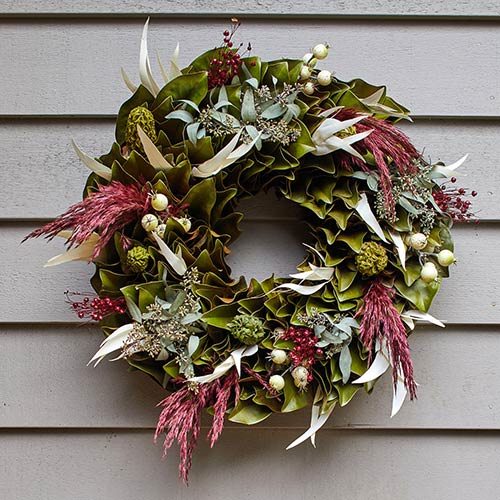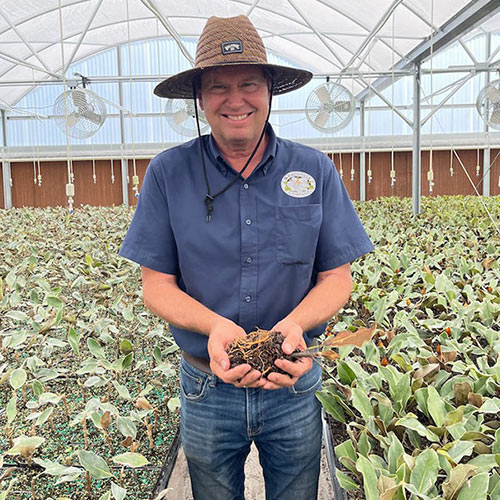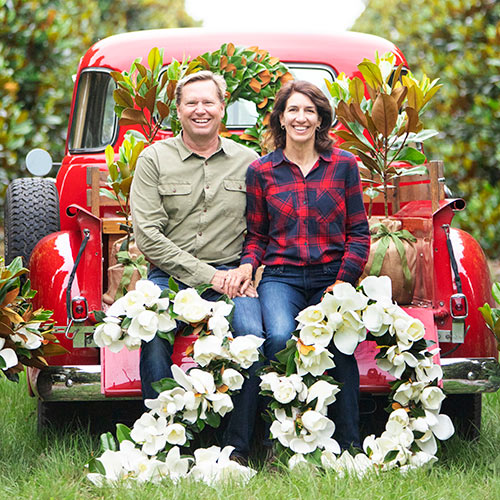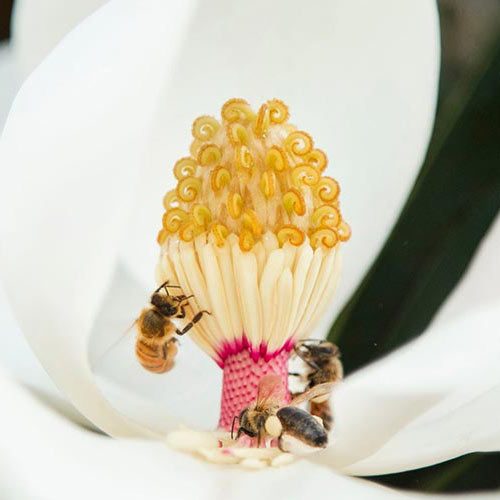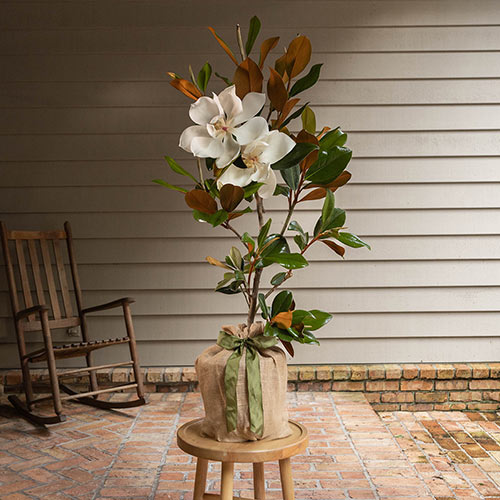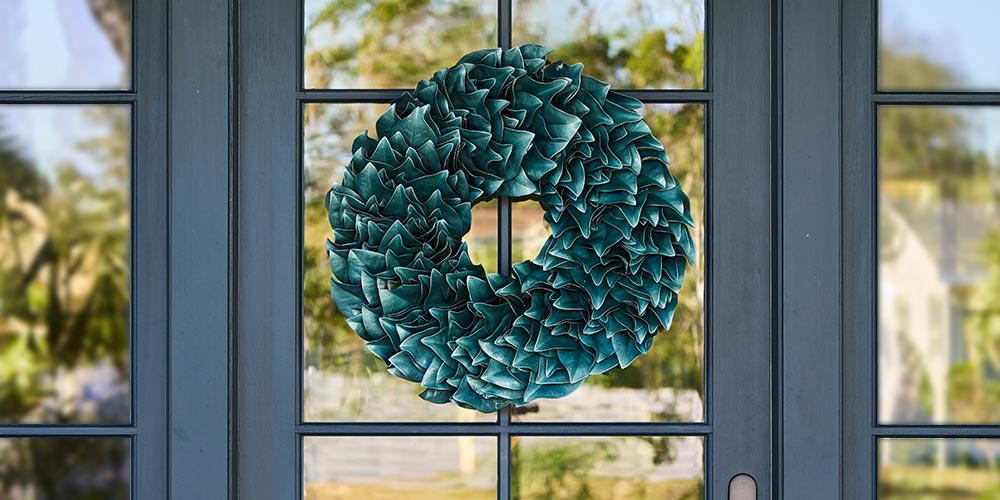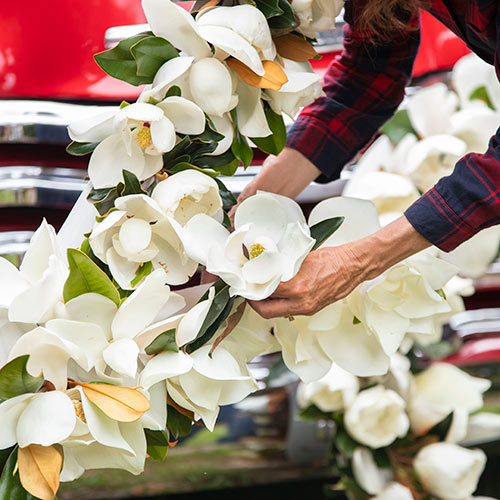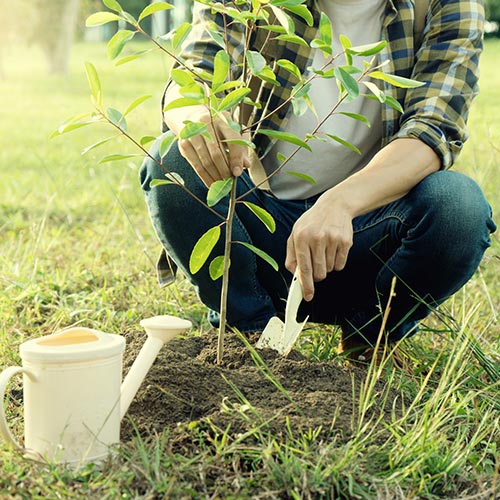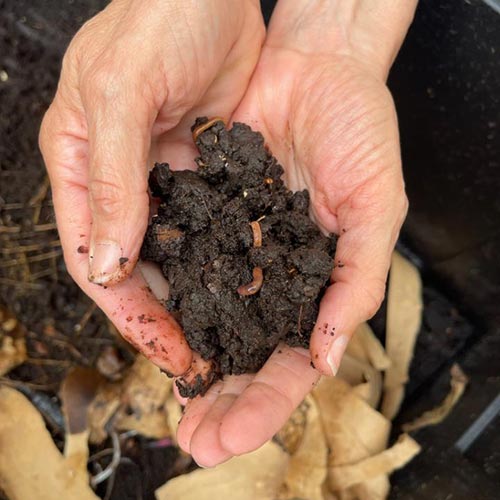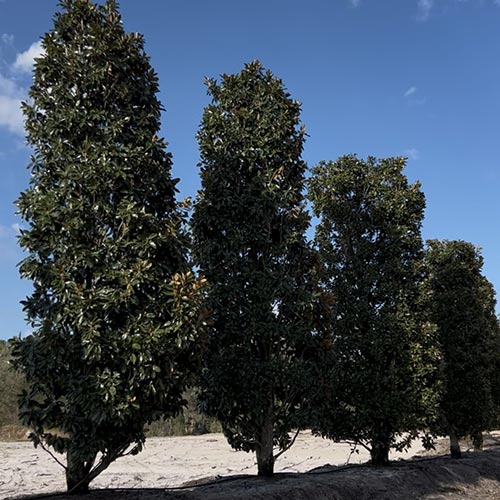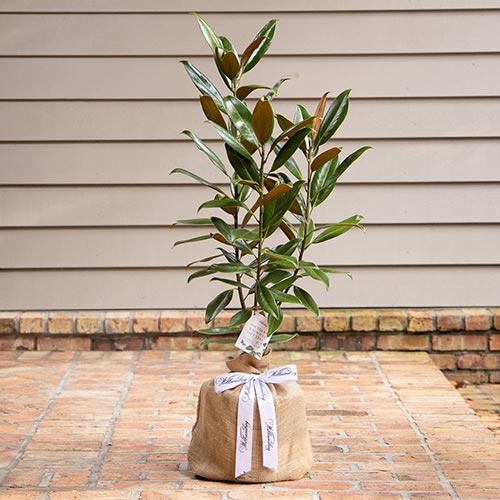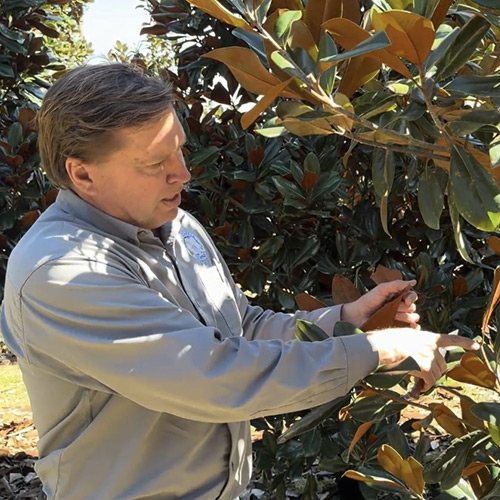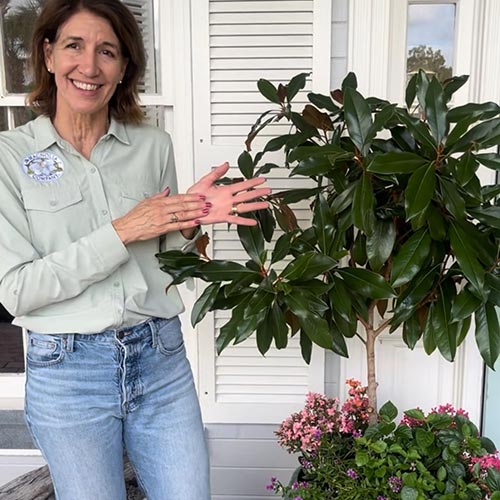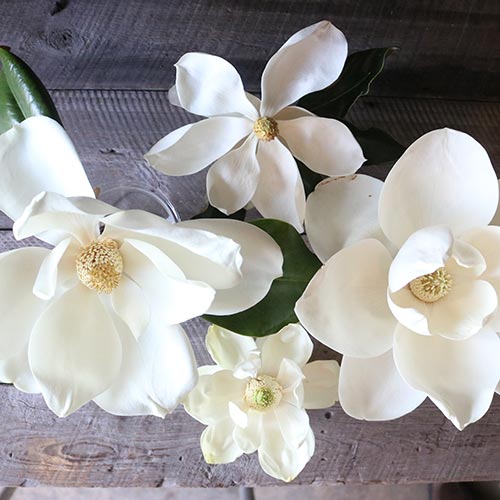Exploring Central Florida’s New Drought-Tolerant Magnolia Tree: The Story of a Seed
February 2nd, 2024
Preface
Before we get into nerdy science that is magnolia seed hybridization and production, you need to meet the main character of this story.
Born and raised in Central Florida, Matt Roth is the horticulturist extraordinaire behind The Magnolia Company. Aside from overseeing the business side of The Magnolia Company, Matt also spends long hours on the farm caring for the magnolia groves, seedlings, and greenhouses.
“I love this side of things more than operating a business,” Matt says, mid sentence during a deep dive into the science of seed stratification. And it’s no secret – being elbow deep in greenhouse dirt, surrounded by seedlings and his family, is the epitome of Matt’s happy place.
Like most creative visionaries, Matt is the kind of guy who has a million ideas and dreams floating around in his brain at once, from little daily projects to multi-decade long endeavors. With the help of Julie (his beloved lifelong partner in planting and the other incredible set of hands behind this operation) and The Magnolia Company’s Team, many of these projects make it to fruition.
Everyone at The Magnolia Company has their fingers on the pulse of the health and wellbeing of the farm. Each tree receives specialized care based on its needs, with careful attention to sustainable harvesting and farming practices. Not so much as a single leaf goes unnoticed or without care.
It’s no surprise that when Matt noticed about five individual trees in a corner of the grove that seemed to change little by little over the course of the last 20 years, you best believe he was all over it.
The Circles of Life & Change
We all know how plant reproduction works. Insects and birds spread genetic material between plants by pollinating flowers, and the flowers become a seed pod (like fruit). Each seed contains a stockpile of stored energy, so when the seed makes it underground, it has the resources to produce roots and a few leaves. As the first leaves develop, the plant switches from using the seed-stored energy source to initiating photosynthesis. The cycle repeats when the plant reaches maturity.
This process varies between plants, but for most flowering plants, this order of operations is fairly common.
Just like children are a unique combination of mom and dad’s genes, plants that reproduce in this manner also create offspring with unique genetic makeups. Science calls the phenomenon “biodiversity,” and it’s incredibly important. Biodiversity ensures a population’s successful adaptations make it to the next generation, protecting the population’s long term survival.
Biodiversity is how we end up with many kinds of plants ranging in size, shape, flower color, leaf style, climate preferences, and so much more – all the while staying in the same species grouping.
On top of the recombination of genes during reproduction, organisms can also undergo spontaneous mutations. A gene is incorrectly copied, expressed, added, or lost in these mutations. If the resulting trait is neutral or advantageous, the change generally gets passed down through generations. Add up enough consistent changes in a localized population and you’ve got a new species on your hands.
So… why all the science?
Let’s go back to the 5 trees Matt took note of. When they were planted, these trees seemed just like all of the surrounding Magnolia Grandiflora (Southern Magnolia).
It’s been over 20 years since.
In the grand scheme of things, most Southern Magnolia trees live for at least a century. These trees are relatively young but fully mature, so it’s safe to assume the traits they’re displaying are thoroughly developed as well.
Matt observed these particular trees – known as cultivars – grow taller, narrower, and require less water than the surrounding plants. Essentially, they’ve adapted themselves to be drought tolerant. Matt took these natural changes and ran with them, diving into the world of strategic seed hybridization.
Developing a drought-tolerant Southern Magnolia species is one of Matt’s big-picture dreams.
It’s a straightforward process: Matt selectively cross pollinates his cultivars in the spring, then harvests the seed pods in the fall. He prepares the seed pod by drying it out and defruiting it (he has a machine that separates the fruit of the seed pod from the seeds themselves). He washes and dries the resulting seeds, and then places the seeds in cold storage in a process called stratification.
The goal of stratification is to simulate nature. Matt keeps seeds in cold storage, mimicking winter, for 90-120 days. When a little tip emerges from the seed, known as a tip radical, he knows it’s time to bring the seed up to room temperature and absolutely saturate it with humidity (hello, artificial spring!).
The tip radical becomes the first root, and the seed uses its carbohydrate energy stores to push a stem. The seed contains enough energy for the first two leaves, after which point the plant begins to rely on photosynthesis for energy.
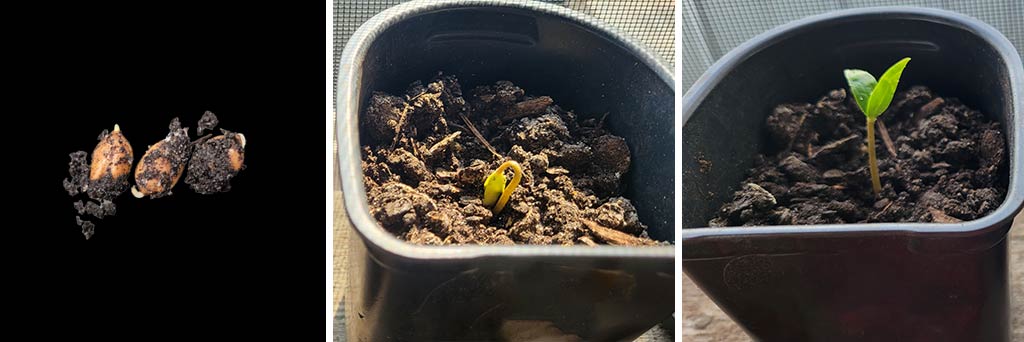
After a year, most saplings are 12” tall. It’s rare, but if the tree manages to flower within its first 1-2 years, Matt feels confident it’ll be a strong tree. Most trees flower at the 2-3 year mark. After 5 years, the magnolia’s individual traits will start to appear.
It’s a significant, decades long undertaking.
First, from a business standpoint, there’s a market for drought-tolerant magnolia trees like this. With modern trends in gentrification and landscape design, people just don’t have the room for enormous, voluptuous greenery. A narrower Southern Magnolia, however, checks the boxes for spatial constraints as well as visual aesthetic.
From the environmental perspective, there’s no getting around the reality of our society’s water consumption problems – especially in Florida, where our natural springs are being siphoned off by greedy water companies and our underground reservoirs are running dry. Agriculture requires copious amounts of water, so every conservation effort counts. Developing a hybrid species of tree that has lower water requirements? Yes, please.
Whenever a distinct new species is created and put into the consumer market, the developer has an opportunity to patent and name the species. It’s a lot of work, but ultimately, developers can choose to collect royalties for each plant sold.
“Realistically the lifecycle of actually making a new species of tree and getting it into the public’s hands is so long term. 20 years or longer. After 17 years, the patent’s up anyway… this project is really for future generations to me.”
“This kind of sustainable stewardship is an important part of both our responsibility and our charter as a company,” says Matt. “It’s an enjoyable part of my work – at 55, I can see around the corner, everything that’s in front of us, and I feel that I need to help. I’m drawn to that responsibility.”
Epilogue
If there’s one thing you can take away from this story, it’s that sustainability is no small endeavor. As kids, we’re told to reduce, reuse, and recycle. Every positive change, including the little ones, add up. Our planet – and future generations – deserve that effort.
As a company, part of our mission is to create as many avenues for sustainability and conservation as we can in our farming and production practices. We’re proud of what we’ve done, from reducing our fertilizer and pesticide use to initiating a half a million dollar water recycling project on the farm. We’re even more excited to see what else we’ll accomplish!
Stay tuned to hear about our continued conservation and sustainability efforts. Just like Matt, we’ve got big dreams!
Recent Articles
